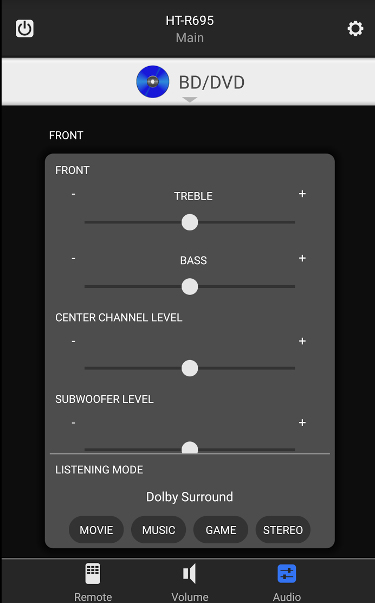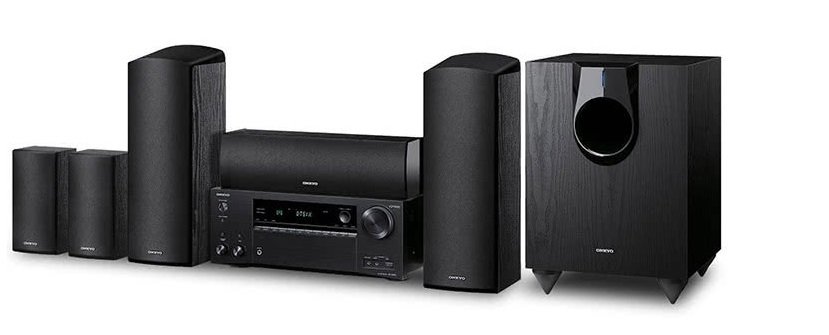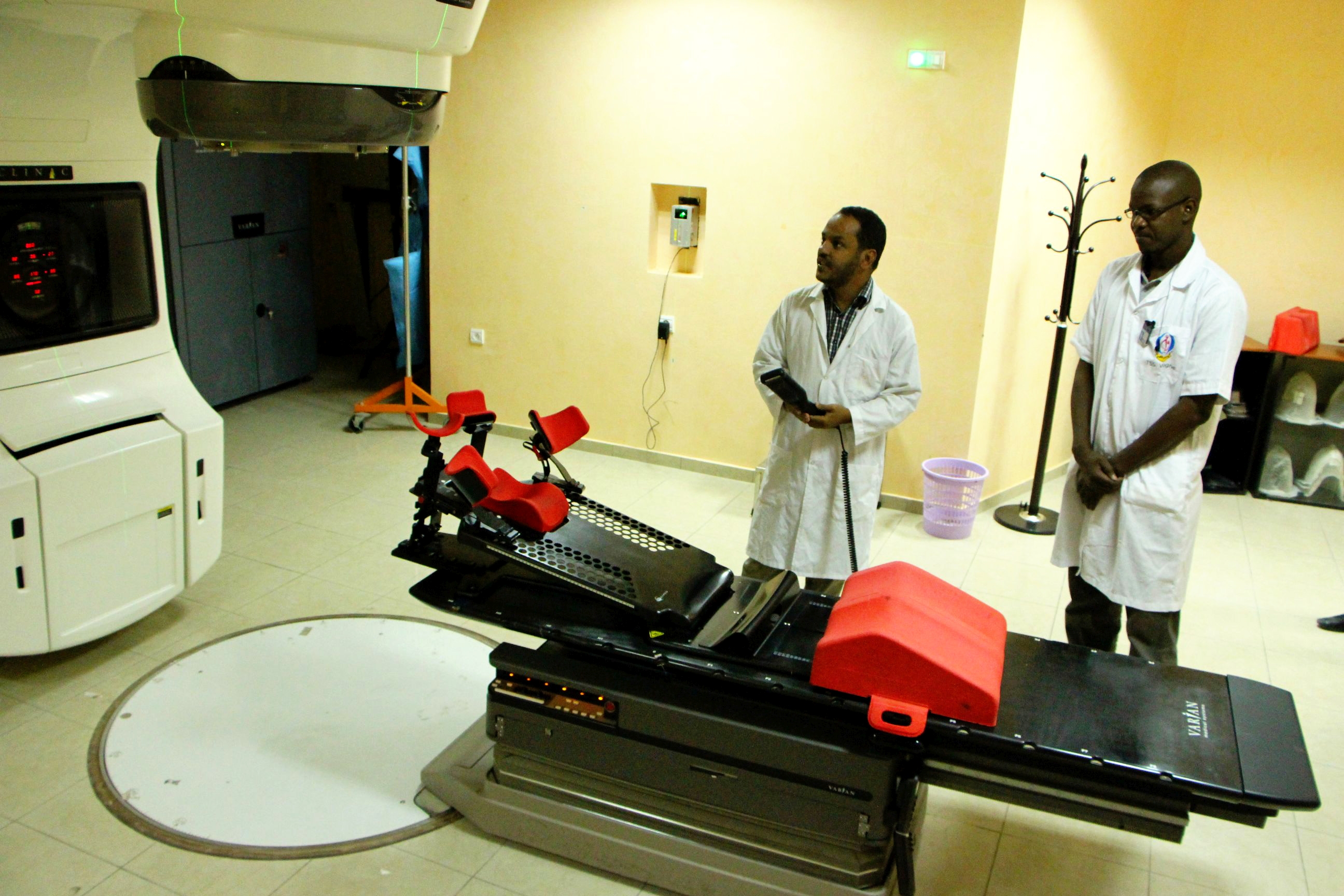Table of Content
Most people will place the front speakers closer to the receiver; as such, Onkyo provides longer cables for connecting the surround channels. My listening position was 13 feet from the receiver, and I had plenty of cable to accommodate that scenario. The included subwoofer, which sports a 10-inch driver, was larger than I expected.
If you own a turntable, the A/V receiver in Onkyo’s HTIB system is the only one we reviewed to be equipped with a phono input. I liked the included microphone to automatically balance the system. I was disappointed with the very thin, small gauge speaker wires. Very Nice System - Has plenty of inputs and works very well with new 4K TV - Make sure you go into set up on the TV screen - The sound had an echo until I did the complete set up on screen . I was pleasantly surprised at the performance of Onkyo’s subwoofer. A 10-inch subwoofer won’t deliver deep bass, but the Onkyo sub gave me a top-to-bottom, thoroughly satisfying experience.
Speaker - Weight
Gabe Lowe is a Data Storage Professional residing in Durham, NC. Upon first getting a taste of surround sound in the late 1980's, Gabriel was hooked. I started with a couple of my Dolby Atmos enabled discs to really get a feel for how well the Dolby-enabled speakers performed as compared with true in-ceiling units. The first disc was the Dolby Atmos demo disc – which includes several Dolby Atmos trailers.

While the Atmos effect was noticeable, the Dolby enabled front speakers sounded slightly less natural as compared with a fully separated speaker system. For example, in the falling leaf trailer, while the sound still seemed to shoot around me as the leaf did, the overall effect seemed slightly less natural as the leaf moved from front to back. I was certainly able to tell that these were phantom ceiling speakers rather than actual speakers firing at me from above.
BenQ TH690ST Projector Preview
Especially considering speakers are included; getting everything cabled properly should be something even the non-technically minded person can accomplish. In my case, I was able to use a combination of my existing in-wall speaker wiring for my surround and subwoofer channels as well as the included speaker wire for L/C/R/LH/RH channels. The included Dolby-enabled speakers have separately cabled ceiling-firing speakers that require a second speaker wire pair.

It is fully compatible with this unit, making it my go to method of control once the network was set up on the receiver. Setting up a home-theater-in-a-box system has become a relatively simple task. Onkyo has done an excellent job with their quick start guide and color-coded wiring.
Onkyo 7.2 Channel Home Theater Receivers
My previous system was a Harmon Kardon, the subwoofer was nearly twice as big as this Onkyo, but not as thunderous. This thing is packed with technology, so most of us will only use half of it. The stuff u want/ need will take you min to figure out...That includes hooking it all up. I tested several Dolby Atmos and non-Dolby Atmos movies with the system. I found after several days of listening that I preferred to keep Dolby Surround enabled for all video content as it had a nice subtle enhancement effect. In fact, every element in object-based sound is mixed separately, so it’s free to travel from speaker to speaker, anywhere around the room.
Proper tuning of the parameters is always required to fully enjoy this mode, but once done, it isn’t bad at all. The trouble I find with listening to stereo recordings with Dolby Surround enabled is that sometimes the result is a part of the music shifting somewhat unnaturally in location. It isn’t blatant, but enough to make me prefer not to listen to music in Dolby Surround. That all being said, with the system set to stereo , I was also very impressed with the sonic quality of the speakers included with this system.
The system is perfect for a small to medium sized living room and will be easy for anyone to get set up and running in under an hour. Once again, Onkyo has delivered a quality yet economical product that I can gladly recommend. The Onkyo HT-R693 A/V receiver included in this package has seven HDMI inputs and two HDMI outputs, so you can support both a TV and a video projector without needing to swap cables. But only one HDMI input and one HDMI output is compatible with the latest version of digital copy protection—HDCP 2.2—that you’ll find in 4K UHD video-playback devices, such as Ultra HD Blu-ray players. Like one of their standalone receivers, it comes with an included setup microphone and an easy user interface setup routine.
At the beginning where Dr. Stone is working on repairing/upgrading the satellite, the camera is constantly floating around as if we are one of the astronauts in space. The audio follows the action around the room so precisely, that you immediately notice how much Dolby Atmos adds to the experience. A phono input connects a turntable so you can enjoy your record collection, and we’ve also added easy-to-use universal Hi-Res Audio compatibility as well. Just use our phone app to find your 192/24, 96/24, or 5.6 MHz DSD albums on PC/NAS and relish the clarity and detail on your Onkyo home theater. Onkyo Onkyo’s receiver delivers the most flexibility connecting outboard audio and video equipment. Due to a policy of continuous product improvement, Onkyo reserves the right to change specifications and appearance without notice.
On the surface, the HT-S7700 packs in a ton of features where it counts. Set this up in an hour, used the included mic for calibration, was blown away by what I had been missing. I'm sure you could spend thousands and get something even better, but for the price the Onkyo system is great. Our magazine, which began with the publication of the SECRETS Primer, is available exclusively on-line and offers to our readers an extensive information resource about home theater and high-end audio. SECRETS of Home Theater and High Fidelity was launched in 1994 as the first major publication offering serious audio/video journalism on the Internet.

To be clear, I am not saying that these speakers are a failure, or that you can’t hope to enjoy Dolby Atmos in such a setup, just that it is not exactly the same as with a full system. In fact, despite this difference, they still sounded pretty good with the demo material. AccuEQ equalizes the surround-sound to suit the room acoustics for crisply focused sound, while AccuReflex aligns the phase of upfiring height speakers with sound coming from your other speakers.
What I missed, in comparison with higher-end Dolby Atmos systems, was any sense of depth behind my listening position. That’s to be expected, of course because you can’t connect rear height speakers to this system. In a matter of 20 minutes, I had everything unpacked and connected and I was ready to use the receiver’s AccuEQ room correction software. AccuEQ will equalize the system for speaker distance, type, crossover, and output level, and it can apply a dose of digital EQ in an effort to correct for acoustic anomalies in your listening environment. To use AccuEQ, you plug the included microphone into the receiver’s front panel and then initiate the step-by-step guide.







